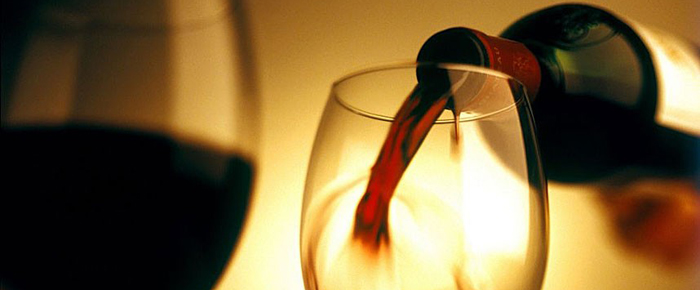
By Rick Riozza
Every talk show in town is telling us that by the third week of January most of our new year’s resolutions have already gone by the wayside. Well they can’t be talking about us wine enthusiasts, because one, we’ve just barely made them, and two, when it comes to wine resolutions; we have a stellar record of keeping our promises to enjoy some good wine for the coming year.
I’ve just heard over the airwaves that there’s some substance found in the body of a jellyfish that can be used to improve a person’s memory. I’m thinking that’s true because everyone remembers the time they got stung by one at the beach.
Of course we’re hoping for more recent pleasant memories, especially when thinking back on how delicious that special Champagne was over the holidays. And indubitably, aren’t these memories especially sharp?
Well—as it turns out, a team of researchers from the United Kingdom’s University of Reading completed a study in 2013 in which they tested the effects of phenolic acid present in the red and white grapes used to make Champagne.
First off, I like this study because I continually have to discuss—even argue—that white wine is healthy too. According to the team’s research, the phenolic compounds in Champagne’s red and white grapes “can improve spatial memory which is responsible for recording information about one’s environment, and storing the information for future navigation.”
All due to the altering of proteins in the brain, these alterations, according to the study, are positive ones which enhance the body’s aptitude for spatial memory and, possibly, for fighting cognitive loss later in life.
Cheers! This is the perfect New Year’s resolution we look forward to keeping all year! Drinking one to three glasses of Champagne a week is very good for the brain, to keep things clear and lively. Wine writer James Duren calls it “a memory-boosting bottle of bubbly”.
So okay—while we’re on the subject, why not make another New Year’s resolution to enjoy the moderate intake of some healthy red wine! Interestingly, there are some vino lovers who are still a bit hazy on the health facts. Not getting too nerdy about things, let’s just cover it once again this year.
Moderate drinking can raise your levels of high-density lipoprotein cholesterol (HDL). HDL is commonly known as “good cholesterol” because it helps your body rid your blood vessels of bad cholesterol, also known as low-density lipoprotein or LDL.
In a 2005 American Heart Association journal article titled, “Red Wine and Your Heart” the authors, Dr. Szmito and Dr. Verma, wrote about the effect of red wine on cholesterol levels. “One to 2 drinks per day of any alcohol type have been shown to increase HDL cholesterol by about 12 percent.”
This effect can be attributed to the levels of polyphenolic compounds in red wine. Not only do polyphenols help raise HDL levels, they wrote, but they also may help prevent the onset of atherosclerosis, the disease in which blood vessels begin to harden as the result of any number of factors including high blood-pressure and high cholesterol.
“Both the alcohol and polyphenolic compounds found in red wine appear to favorably maintain healthy blood vessels by promoting the formation of nitric oxide, the key chemical relaxing factor that plays a pivotal role in the regulation of vascular tone,” the doctors stated.
Citing another study about heart health, Szmitko and Verma said that men without cardiovascular disease who drink one to three drinks per day at a rate three to four days per week could decrease the risk of a heart attack “by as much as 32 %.”
While excessive alcohol consumption can have adverse effects on your health, moderate consumption of wine is linked to a reduced risk of cardiovascular disease. Wine contains heart-healthy antioxidant compounds known as resveratrol and procyanidin. Red wine is particularly rich in these substances. When it comes to content though, some red varieties contain more cardio-protective compounds than others.
Now this is a debate red wine enthusiasts love to drink over: Which grape varietal is the healthiest?
When studying 100 different red wines, Leroy Creasy, PhD, a professor emeritus in the Department of Horticulture at Cornell University, consistently found the highest concentrations of resveratrol in Pinot Noirs that had been grown in cool, rainy climates. Also scoring very high in resveratrol is Merlot, Grenache, Cabernet Sauvignon, Tempranillo, and Malbec.
Now as to procyanidins, All red grapes, particularly those with thick skins and high skin-to-pulp ratios, contain them. But, after measuring the concentration of several common red wine grapes, cardiovascular expert at the William Harvey Research Institute in London, Dr. Roger Corder, identifies Tannat as the grape with the greatest concentration.
The rustic wines, made from Tannat grapes, contain very high levels of procyanidins. This antioxidant improves cardiovascular and arterial health, and has been linked to increased longevity by several studies, including one 2006 paper published in the journal Nature.
The real-life evidence of Tannat’s benefits can be seen in the surprisingly long lifespans of residents of the département of Gers in southwest France, whose local wine appellation is Madiran. Gers contains more than double the national average of men in their nineties. Madiran’s principal grape is Tannat and it has been known in France as “Le Vin Noir”—the black wine.
Interestingly, Uruguay vineyards abound with Tannat—their new “national wine”. Total Wine in Palm Desert has a good selection of Tannat, including one from California’s Tablas Creek Winery.
My pick for one of the healthiest wines in town: Trapiche Oak Cask Malbec $8.50 at Pavilons. Intense dark fruit flavors with violets and elegant touch of smoke & vanilla. A votre santé! Cheers!








































